Past, Present, and Future of Oculus VR
DK1
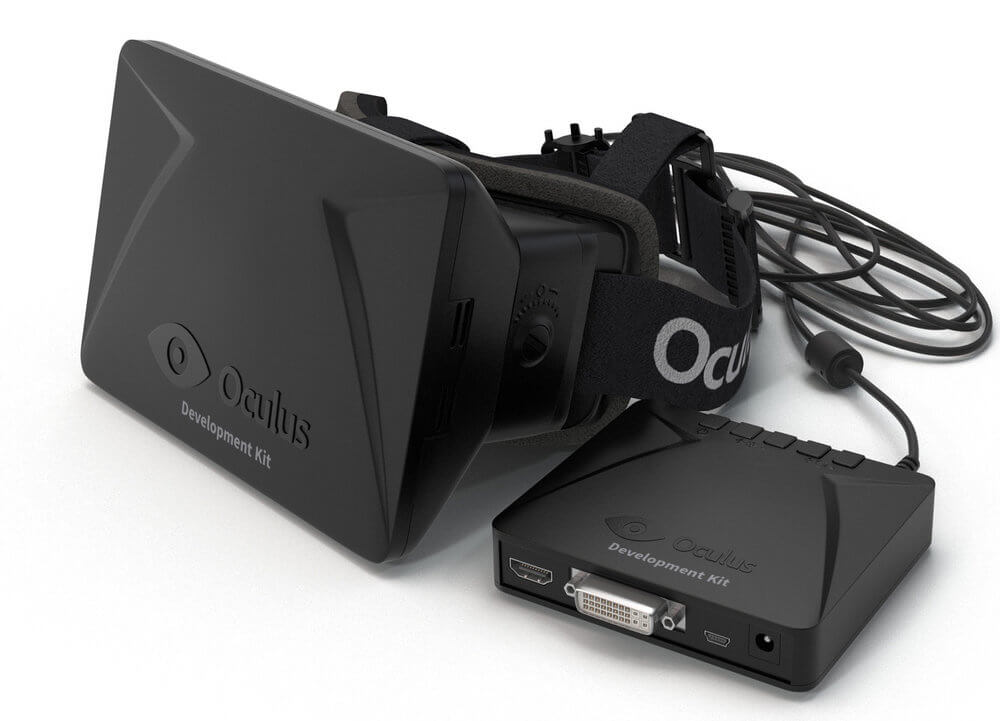
Image credit : Oculus VR
The DK1 was the first generation virtual reality headset developed by Palmer Lucky. The project was funded through the success of a Kickstarter campaign that raised over 2.4 million USD. The biggest purpose of the DK1 was to enable developers to integrate VR displays into their games and content.
The Rift DK1 model initially released on March 29 2013. The devices uses a 7-inche screen with a significantly lower pixel switching time than original prototype. This minimize motion and latency when user turns head rapidly. The pixel fill was also improved which reduced the screen door effect that made individual pixels less obvious. The color depth at 24 bits per pixel.
The 7 inch screen also eliminates stereoscopic 3D to overlap. The field of view is greater than 90 degrees horizontal and 110 degrees diagonal. This is more than double of previous VR devices from other manufacturers at the time. The resolution is 1280 x 800 (16:10) aspect ratio, which leads to 640 x 800 per eye (4:5 aspect ratio). However, since the Rift does not feature a 100% overlap between the eyes, the combined resolution is actually greater than 640. The DK1 integrate a Hillcrest Labs 6DoF head tracker normally at 125HZ, while John Carmack modified to operate at 250HZ.
The DK1 also include interchangeable lenses that enable simple dioptric correction. The source of DK1 was released to the public in September 2014. Schematics, mechanicals, and firmware for the device became an open source.
In March 2014, Facebook acquired Oculus VR and it’s team for $2 billion USD.
DK2
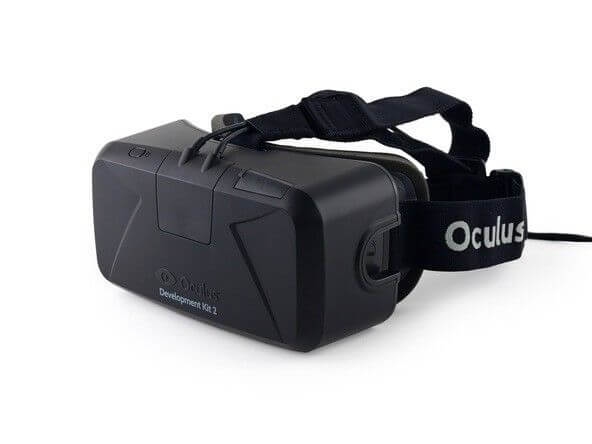
Image credit: Oculus
Oculus begin shipping 2nd generation Developer Kit 2 (DK2) in summer of 2014. The device featured several major improvements such as higher resolution (960 x 1080 per eye), higher refresh rate, and low persistent OLED display, positional tracking, and dechable cable. The external control box was eliminated. Oculus reported total of 100,000 DK2 shipped through February 2015.
Over the past several years, prototype models such as Crystal Cove and Crescent Bay was revealed at major VR and consumer electronic events around the world.
Samsung Gear VR
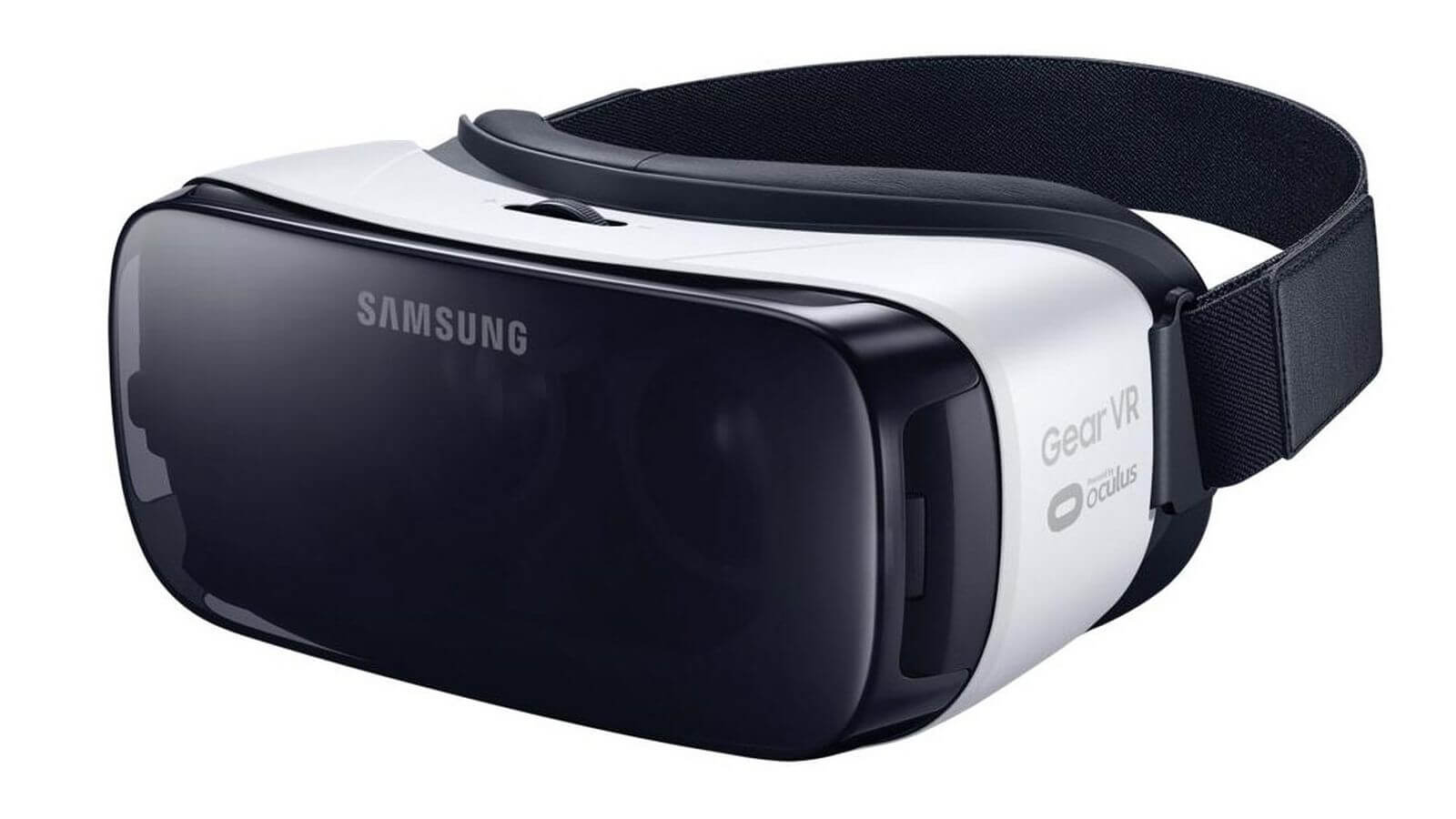
Image credit: Oculus
The Gear VR is a collaboration between Samsung and Oculus. The mobile VR headset first released back in November 2015. The device is powered by Samsung line of Galaxy smartphone. The VR device itself act as the controller, contains field of view, and inertial measurement units for rotational tracking. To date, the headset has sold over 5 million units worldwide.
Oculus Rift Consumer Version
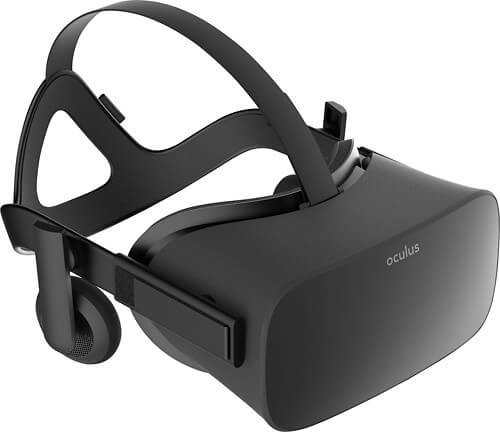
Image credit: Oculus
The first batch of consumer model began shipping in March 2016. The consumer version is an improved version of the Crescent Bay prototype. The headset features 90HZ per eye and 360 degrees positional tracking. It also has integrated audio and improved ergonomic design.
In October 2017, Oculus announced two significant milestones in their largest areas of development. Namely, standalone headsets to bring freedom and accessibility to virtual reality. This means future VR devices will completely eliminate cables, and would no longer need a mobile smartphone.
Is you PC VR ready? see our specifications here
Oculus Go
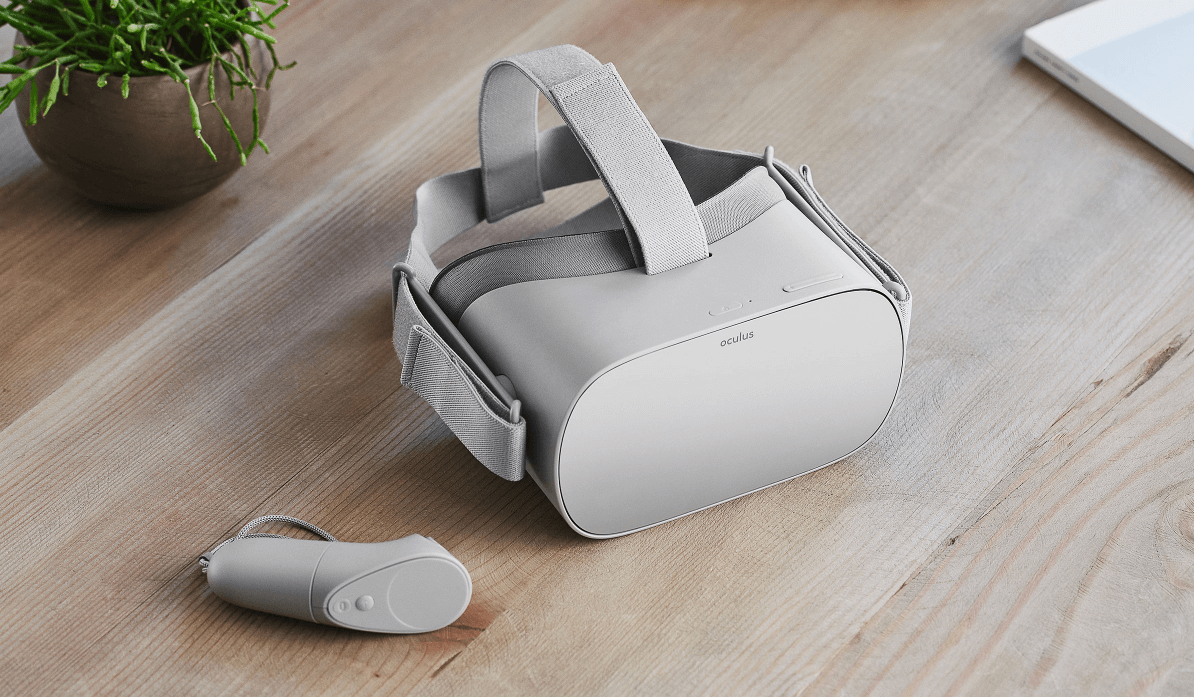
Image credit: Oculus
Facebook owned Oculus revealed a new standalone VR headset. The Oculus Go will release during first quarter of 2018. It is now the end of February 2018, so chances are we will be expecting the launch of the much anticipated $199 headset in the next few weeks. It is noteworthy to mention that Gear VR and Oculus Go are binary compatible, this means developers for Gear VR are already creating content for Oculus Go.
The device features high-resolution fast-switch LCD that significantly improves screen door effect, and visual clarity. The lenses are also best to date, as it offers a wide field of view with greatly reduced glare. Speakers are also built directly into the headset, while a 3.5mm headphone is available for private listening.
A leaked image from Reddit shows promising look of the device, that it will include over 1,000 app, games, and movies titles at launch. The image revealed that apps such as Netflix, Facebook, Hulu, Ultrawings, The New York Times, Discovery, Anshar 2, Fox Sports VR, Discovery, Ocean Rift, and many more will be part of the package.
The headset recently officially listed on FCC, which means it will be available for sale .
Oculus Santa Cruz
PC based VR headset owners knows the hassle that comes with having an expensive computer and the need to manage all the cables.
While major premium VR headsets currently on the market rely on external cameras and sensors for tracking, Oculus Santa Cruz is Facebook’s ambition to utilize in-side-out tracking technology, integrating sensors on the headset instead of an external requirements. The Oculus Touch controllers are also redesigned specifically for the Santa Cruz.
The entire computer process is built directly onto the headset, without the need for external console or powerful PC.
Mark Zuckerberg conformed at Oculus Connect 4 that developers will begin receiving their Santa Cruz prototypes later in 2018.
